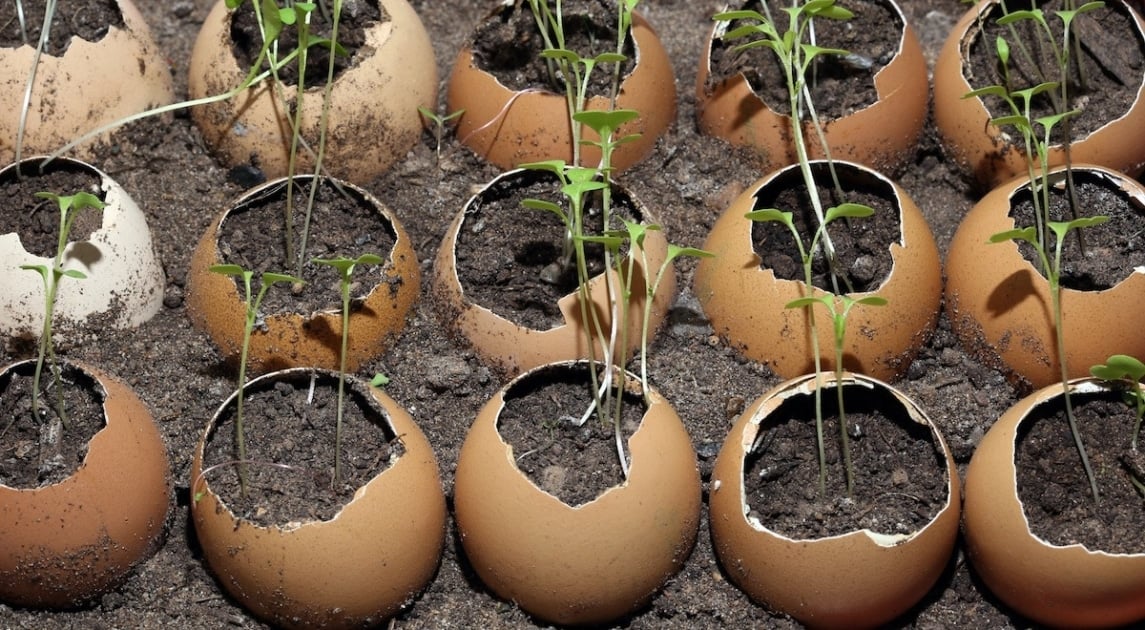Seed Starting Chart: Best Times To Start Your Seeds
Ready to get growing? Our handy chart will help you figure out when and where to start your seeds.

Ready to start that spring garden but not sure when you should start your seeds? We can help. Our seed starting chart helps you determine when and where to start your seeds. Some seeds should be started indoors, while others can be directly sown outside. Refer to our Average Frost Dates to determine your last spring frost. Your seed packets will have most of the information you need, but here are our recommendations:
Best Times To Start Your Seeds
| Seed | Where to Start | When To Start |
| Artichoke | Inside | 8-12 weeks before last frost |
| Arugula | Outside | Early spring |
| Asian greens | Outside | Early spring |
| Asparagus | Inside | 12-14 weeks before transplant date |
| Bean, bush | Outside | Soil temperature 60 degrees |
| Bean, dry | Outside | Soil temperature 60 degrees |
| Bean, fava | Outside | As soon as the soil can be worked |
| Bean, fresh shell | Outside | After last frost date |
| Bean, lima | Outside | Soil temperature 75 degrees |
| Bean, pole | Outside | Soil temperature 60 degrees |
| Bean, soy | Outside | After last frost date |
| Beet | Outside | Minimum soil temperature 45 degrees |
| Broccoli | Inside | 3-4 weeks before transplant date |
| Broccoli raab | Inside | 3-4 weeks before transplant date |
| Brussels sprout | Inside | In May, ready to transplant in 4-6 weeks |
| Burdock | Outside | Anytime in spring |
| Cabbage | Inside | 4-6 weeks before transplant date |
| Chinese Cabbage | Inside | 3-5 weeks before last frost |
| Cardoon | Inside | 6-8 weeks before last frost |
| Carrot | Outside | Minimum soil temperature 40 degrees |
| Cauliflower | Inside | 4-6 weeks before transplant date |
| Celery | Inside | 10-12 weeks before transplant date |
| Celeriac | Inside | 10-12 weeks before transplant date |
| Collards | Outside | Early spring |
| Corn, broom | Outside | After last frost date |
| Corn, dent | Outside | Soil temperature 60 degrees |
| Corn, ornamental | Outside | Soil temperature 60 degrees |
| Corn, popcorn | Outside | Soil temperature 60 degrees |
| Corn, sweet | Outside | Soil temperature 65 degrees |
| Cucumber | Inside/Outside | 3-4 weeks before transplant date/Soil temperature 70 degrees |
| Eggplant | Inside | 6-8 weeks before transplant date |
| Endive/Escarole | Inside | 3-4 weeks before transplant date |
| Gourd | Outside | Soil temperature 70 degrees |
| Kale | Outside | Early spring |
| Kohlrabi | Outside | Early spring |
| Leeks | Inside | Start February/March for late spring |
| Lettuce | Outside | As early as possible |
| Melon | Inside | 4 weeks before transplant date |
| Mustard | Outside | Early spring |
| Okra | Inside/Outside | 4-5 weeks before transplant date/Soil temperature 70 degrees |
| Pac choi | Outside | Early spring |
| Parsnip | Outside | Early spring |
| Onion | Inside/Outside | 10-12 weeks before transplant date |
| Pea | Outside | As soon as soil can be worked |
| Pepper | Inside | 8 weeks before transplant date |
| Potato | Outside | Early to midspring |
| Pumpkin | Outside | Soil temperature 70 degrees |
| Radicchio | Inside | 3-4 weeks before transplant date |
| Radish | Outside | As soon as soil can be worked |
| Sorrel | Outside | Early spring |
| Spinach | Outside | As soon as soil can be worked |
| Squash, summer | Outside | Soil temperature 60 degrees |
| Squash, winter | Outside | Soil temperature 60 degrees |
| Swiss chard | Outside | As soon as soil can be worked |
| Tomatillo | Inside | 4-5 weeks before transplant date |
| Tomato | Inside | 5-6 weeks before transplant date |
| Turnip/Rutabaga | Outside | Early spring |
| Watermelon | Inside/Outside | 1 month before transplant date/Soil temperature 70 degrees |
Find your Average Frost Date.
Planting by the Moon

Be sure to also check our Gardening by the Moon calendar, which will guide you to which garden tasks are best done based on phases of the Moon.
Join The Discussion!
What are you growing?
Do you have questions about seeds that are not on our list above?
Let us know in the comments below!
This article was published by the Staff at FarmersAlmanac.com. Any questions? Contact us at [email protected].







How much does the seed starting timeline change (in general) if the seedlings are to be transferred to a non-heated greenhouse (in grow bags) as opposed to in the garden?
Should seedbeds for above ground and root crops follow the same days as planting those crops? Or can any crops be started on days good for seedbeds?
We consider a seedbed to be a bed of cultivated soil prepared for seeds or seedlings that will be transplanted, regardless of if whether they will ultimately be above ground or root crops. If you are direct sowing (planting where you want the plant to grow), then plant by the appropriate best day for that type of crop.
I use a separate Google calendar from my personal calendar. Put in my dates there and set alerts, for the following or preceding weekend, to remind myself to get in the garden!
Is there a link to the place where I can put in my frost dates for my zone along, with the veggies and medicinal herbs I’m planting, to populate and remind me when to seed, transplant and harvest? Any suggestions?